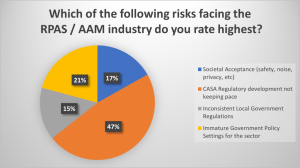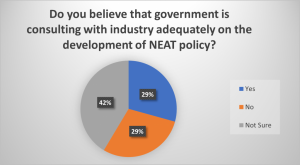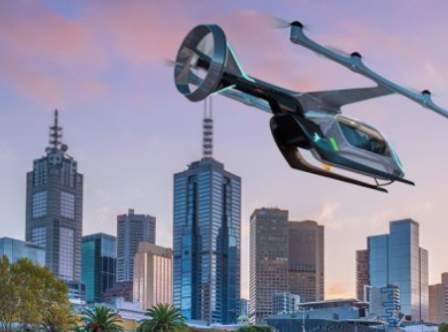The Australian Association for Unmanned Systems (AAUS) hosted a virtual Q&A session at the end of July to explain the latest developments behind the country’s National Emerging Aviation Technologies (NEAT) Policy. A policy statement issued in May sets out how Government will support individuals, businesses and industry to adopt new and emerging digital aviation technology.
As part of the policy statement, the Government has committed to a range of whole-of-government initiatives that will create a scalable, efficient and adaptable operational ecosystem for emerging technologies. These initiatives include development of Australia’s Unmanned Aircraft System Traffic Management system, regulatory modernization and providing industry support.
Key points from the webinar:
- The NEAT policy statement has been created to provide a platform from which to build from, and deal with other issues as they arise. The Department welcomes feedback as it progresses the initiatives in the statement.
- The Drone Management System aims to provide a consistent set of rules and regulations for drone users. The aim of this initiative is to prevent a patchwork approach of rules that make it difficult for operators to know what applies to them and makes managing our airspace unnavigable.
- As rules are developed via the Drone Management System there needs to be mechanisms in place to enforce them. The intent behind the Enforcement Framework is to empower local enforcement authorities, particularly state and territory police to be able to take appropriate actions and issue fines for improper drone use. The Department is exploring how they can give effect to this approach.
- Privacy and security data will be critical under the National Drone Detection Network. The alternative to the Network would be several individual agencies separately collecting data, rather than one central source which would create more data security risk. Work is being undertaken on the privacy implications and how the system will operate.
- The Department has been working with local authorities who have already been through planning processes for drone related infrastructure to produce simple guidance material that can be used by other local authorities who receive similar planning requests. The Department will be looking at the more complex infrastructure that will cover areas such as AAM and eVTOL in the future.
- The Safety and Regulatory Roadmap initiative is critical in furthering the growth of the sector. A technical working group has been established by CASA with the hope of having a draft roadmap by the end of 2021.
- Australia’s Future Airspace Framework, under development by CASA, is going to be a strategic framework outlining how air space is used in Australia. Its focus will be to provide clarity on the integration of drones and eVTOLs into Australia’s air space system.
- There is not much call to develop custom legislation relating specifically to the privacy impacts of drones. The Department is working with relevant agencies to provide clearer guidance on how existing laws apply to the sector and what best practice could look like.
- The Emerging Aviation Technologies Partnership Program is an opportunity to work closely with industry partners to start delivering interesting and innovative services using drones. The Department is currently working on the program guidelines and criteria and is aiming to call for applicants in the 4th quarter of 2021. The funding has currently been secured for two years.
- Funding will apply to five focus areas: digital farming, connecting regional communities, boosting regional supply chains, improving health outcomes for remote indigenous communities and growing manufacturing in emerging aviation propulsion systems. Applicants will have to address one or more focus areas and meet the relevant criteria to obtain funding. The program is designed to help address regulatory barriers, help deal with the practical problems that come with getting a new product or service off the ground and assist with the consultation process with all levels of government.
- Launching a new website to bring together all information relating to drones and policy. The Drone Information Hub will include links to external sources for more information. The hub will also act as a consultation platform allowing opportunities for engagement with industry.
During the webinar, AAUS conducted two industry polls:


For more information visit:




